As the concept of remote work becomes increasingly popular, setting up a productive and comfortable workspace at home is vital. This goes beyond just having a table and a laptop, but delves into creating an environment that nurtures concentration, creativity, and efficiency. With a broad discussion on key factors that influence a home office setup, to the critical importance of ergonomics for comfort and efficiency and finally, valuable productivity hacks tailored for working from home, this piece seeks to shed light on how one can fashion an optimal home office while highlighting the integral role it has in steering work dynamics and boosting productivity.
Essentials of Home Office Setup
Choosing the Perfect Location
A crucial first step in setting up a home office involves selecting the most suitable location for your workspace within your home. This could either be a spare room or a quiet corner in your house. The selected spot should be free from common household distractions and should ideally be dedicated purely to work. Additionally, you should consider the nature of your work when choosing the location. For instance, if your work involves frequent phone conversations or video conferences, you would need a secluded and quiet space. You should also consider the space’s accessibility to other necessary facilities such as restrooms and the kitchen.

Investing in Comfortable Office Furniture
Comfortable and ergonomic office furniture is vital for a home office. This includes a desk, chair, and storage solutions. An office chair should be ergonomically designed to avoid causing discomfort or back pain, even when sitting for long periods. The desk needs to be spacious enough to house all necessary equipment such as computer, printer, and documents. Adequate storage solutions such as shelves and drawers help in organizing and de-cluttering the workspace, promoting increased productivity.
Ensuring Adequate Lighting
Proper lighting in your home office is essential to avoid straining your eyes, especially when you are working on a computer. Natural light is the best option as it can lift your mood and energy levels. But if natural light is limited, ensure to install sufficient artificial light. Overhead lights coupled with task lighting like desk lamps can create an ideal lighting situation. Additionally, to avoid screen glare, position your computer screen such that it does not directly face the window.

Setting Up Essential Technology
Setting up essential technology is a must for any home office. Ensure that you have a reliable and high-speed internet connection as most work tasks like emails, video conferencing, and online research require internet. Depending on your work, you might need a computer or a laptop with a fast processor and sufficient memory space. Invest in a quality headset if your work involves frequent phone calls or video meetings. Also, you may need relevant software and subscription services. Remember to back up your work regularly.
Creating a Productive Home Office Environment
Aligning your home office setting to facilitate productivity is an essential first step. This goes beyond having the right equipment – it includes creating a tranquil environment conducive for focused work. One vital condition to consider is noise level. If your dwelling is in a noisy locality, you might wish to soundproof your workspace or utilize a quiet cooling fan or a white noise device to mitigate the disturbance. Keeping a neat and organized office that is distinct from the rest of your home can also enhance professionalism. Finally, infusing personal elements, such as family photographs, artworks, or indoor plants, can make the space feel more personal, thereby providing a source of motivation and inspiration.

Ergonomics and Comfort in Home Offices
Prioritizing Good Posture in Your Home Office
When setting up and working in your home office, it’s crucial to pay attention to good posture. A first step is to invest in a chair that offers comprehensive support – for your back, neck, and arms. An ergonomic chair designed for this purpose can help prevent the onset of musculoskeletal disorders. Additionally, setting up your computer screen at eye level helps avoid unnecessary neck strain. Ensure that your feet rest flatly on the ground or on a footrest to further enhance posture and alleviate lower back pressure. Be conscious to take short breaks every 20-30 minutes to correct any postural deviation and stretch your muscles, helping maintain your health as you work.
Organizing the Workspace
Creating an organized workspace greatly contributes to the efficiency and productivity of work from home. Try to designate a specific area of your home as your office space and keep it free of clutter. Organizers, such as file holders or drawer organizers, can help keep paperwork and equipment tidy. Using labels can make it easier to locate necessary items quickly. Likewise, having a designated location for all stationary and materials ensures a neat and efficient work environment. Furthermore, consider a desk with ample workspace for your computer, keyboard, mouse, and any necessary paperwork.
Reducing Health Risks Associated with Prolonged Sitting and Improper Workstation Design
Improper workspace design can lead to prolonged sitting and various health risks like musculoskeletal disorders, obesity, cardiovascular diseases, or diabetes. To avoid these issues, introduce adjustable furnishings that can allow you to alternate between sitting and standing. An adjustable or standing desk is an invaluable addition to your home office. Additionally, when you are sitting, make sure your chair provides enough support to maintain a healthy posture.

Creating a Comfortable Working Environment
To make your home office comfortable, select an office chair with good lumbar support and is adjustable to your height and shape. Natural light is important as it affects mood and alertness. If possible, place your desk near a window to maximize natural light and consider using full-spectrum bulbs, which closely replicate natural light. Ventilation is also crucial, prioritizing fresh air in your workspace, either through a fan or an air purifier. Also, ensure that your workspace is quiet as much as possible to avoid distractions.
Practical Tips for Home Office
Stay organized and disciplined within your home office. Set specific working hours, keep your workspace tidy, and avoid home-based distractions as much as possible. Remember to take breaks regularly to stretch and let your eyes rest. Consider using productivity apps to manage tasks effectively. Try to incorporate greenery into your workspace as indoor plants may make the area more pleasant and improve air quality. Do not forget to hydrate yourself frequently and keep your workspace warm, but not overly hot or cold.
Creating an Ideal Home Office
Having a well-designed home office is key to your productivity and comfort. It starts with choosing a desk large enough for all your work essentials and investing in quality lighting to lessen the chances of eye strain and headaches, while also enhancing your efficiency. Your workspace should be positioned in a quiet area of your home to minimize distractions. It’s important, too, to select an ergonomic chair and desk to promote correct posture and prevent musculoskeletal problems. Finally, don’t overlook the impact of personal touches. Adding family photos, art pieces, or indoor plants can increase your comfort levels and enjoyment of the space, making it truly your own.
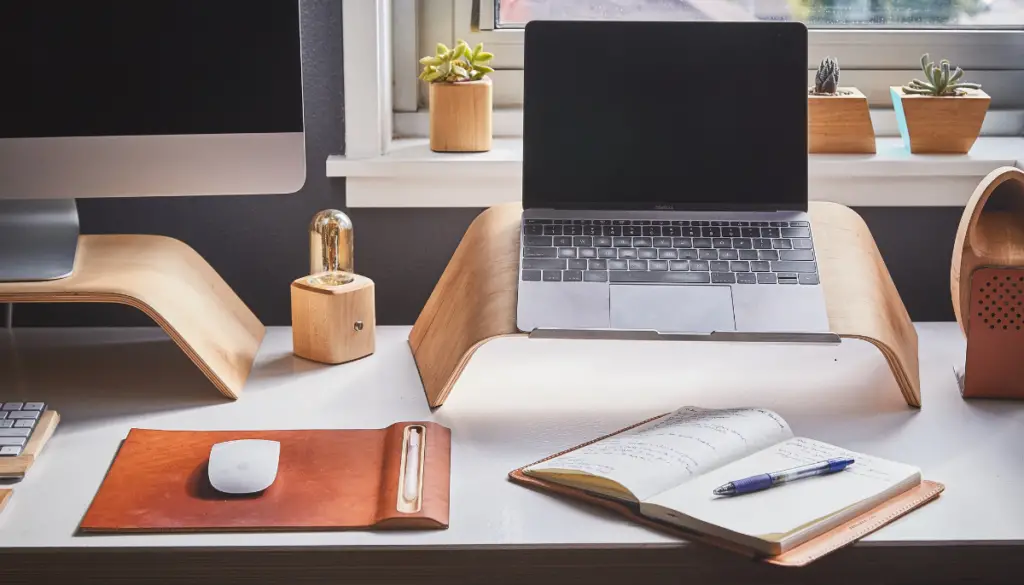
Productivity Hacks for Home Offices
Strategies for Managing Distractions in Your Home Office
Unlike in a traditional office setting, working from home introduces a unique set of potential distractions, from family members and pets to household chores and the lure of leisure activities during work hours. It’s essential, therefore, to establish clear boundaries. Make your “office hours” known to your family and ask that they respect your working time. Additionally, try to minimize digital distractions by turning off non-essential notifications on your electronics. You could also set aside specific time slots for domestic tasks or personal matters. By integrating these periods into your daily schedule, you can strike a balance that allows for focused work and few disruptions.

Effective Time Management Techniques for Home Work
Effective time management techniques are crucial to productivity when working from home. It can help to mimic a traditional office schedule, including set start and end times and scheduled breaks. Using productivity tools such as to-do lists or project management apps can help you keep track of tasks and deadlines. The Pomodoro technique, where you work intensely for 25 minutes and then take a five-minute break, can help maintain focus. Always prioritize your work tasks and stay aware of avoiding ‘busy work’ that gives the illusion of productivity.
Role of Organized Workspace in Productivity
An organized workspace plays a significant role in enhancing productivity when working from home. Having a clean, clutter-free desk helps reduce distractions and tends to make you feel more professional and focused. It’s good to have all your work essentials within reach to avoid wasting time searching for them. Besides physical organization, digital organization is also vital. Regularly organizing files and folders on your computer and inbox management can save a considerable amount of time and boost efficiency.

Work From Home Best Practices
Some best practices for working from home include maintaining consistent work hours and creating morning routines to kick start the day. Dressing up as if you are going to the office can make a difference in your mindset and productivity levels. Having a separate workspace can reinforce the boundary between work and personal life, making it easier to switch off after working hours. Don’t forget to take regular breaks and to move around – it aids in maintaining physical health and helps in focusing better.
Finding Work-Life Balance in a Home Office
When the boundary between work and personal life blurs, it’s essential to deliberately create a work-life balance to prevent burnout. Keeping a clear distinction between your work and personal areas within the house can help. Avoid working during non-work hours, and ensure you have time to rest and engage in leisure or hobby activities. Remember to make time for physical activity and social interactions, even if virtual.
Maintaining Mental Health while Working From Home
One disadvantage of working from home is the potential impact on mental health due to isolation and extended screen time. To counter this, it’s crucial to stay socially connected with colleagues and friends, even if digitally. Mindfulness practices, such as a few minutes of meditation or deep breathing, can help reduce stress. Regular physical exercises and a balanced diet also contribute significantly to mental wellbeing. If you find challenges, don’t hesitate to seek professional help.

It’s evident that creating an efficient home office setup requires more than just swapping your office desk with your kitchen table. It is about selecting an appropriate location, creating a comfortable environment, and investing in technology and ergonomics for a seamless work from home experience. Ultimately, productivity doesn’t hinge solely on the physical aspects of your workspace, but equally on your ability to manage distractions, manage your time effectively, attain work-life balance, and maintain your mental health. In this rapidly evolving work culture, your home workspace is your stronghold of productivity, and shaping it rightly is essential in ensuring a successful remote work journey.

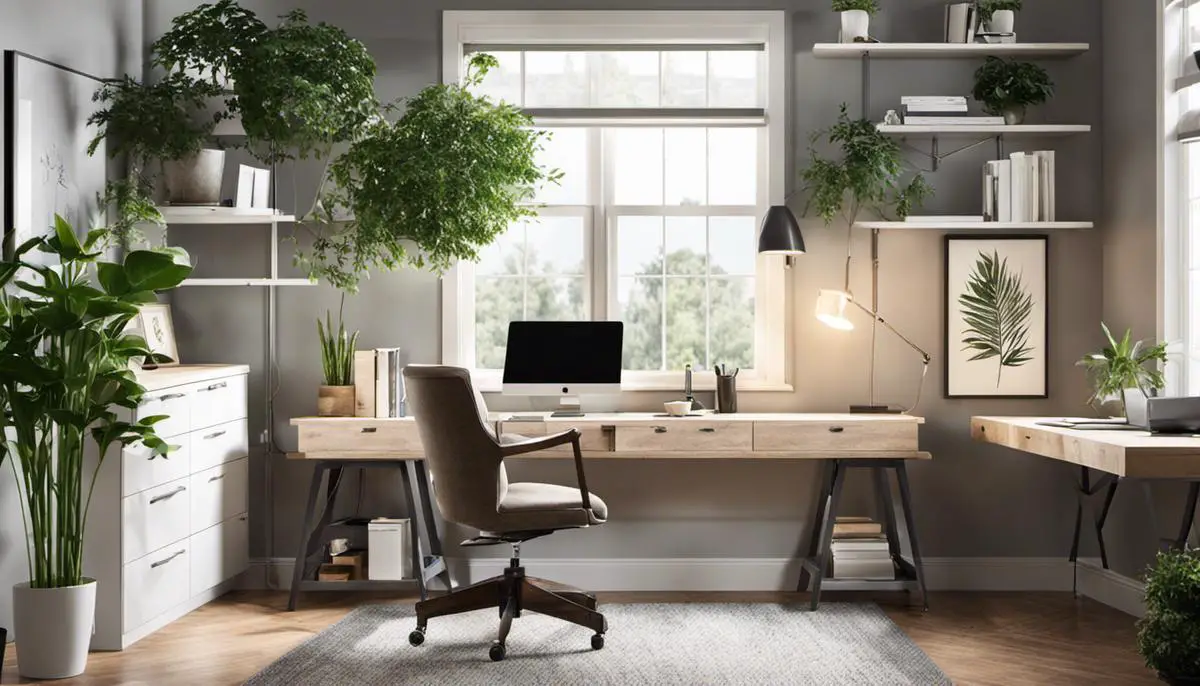
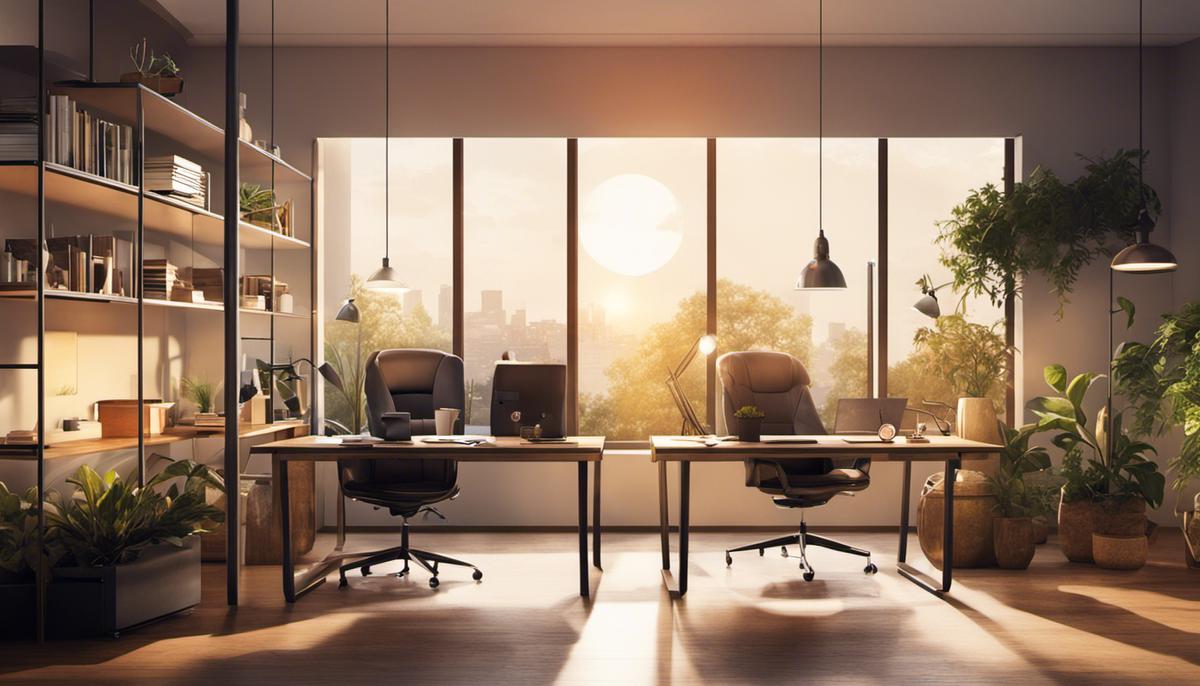

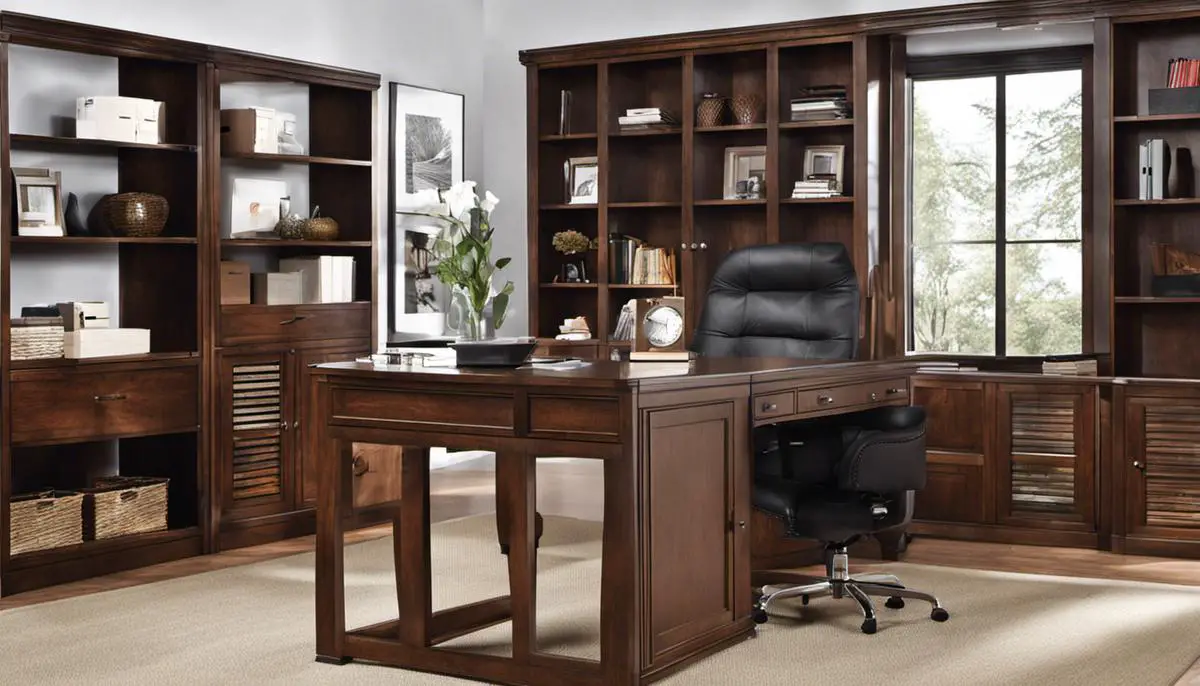
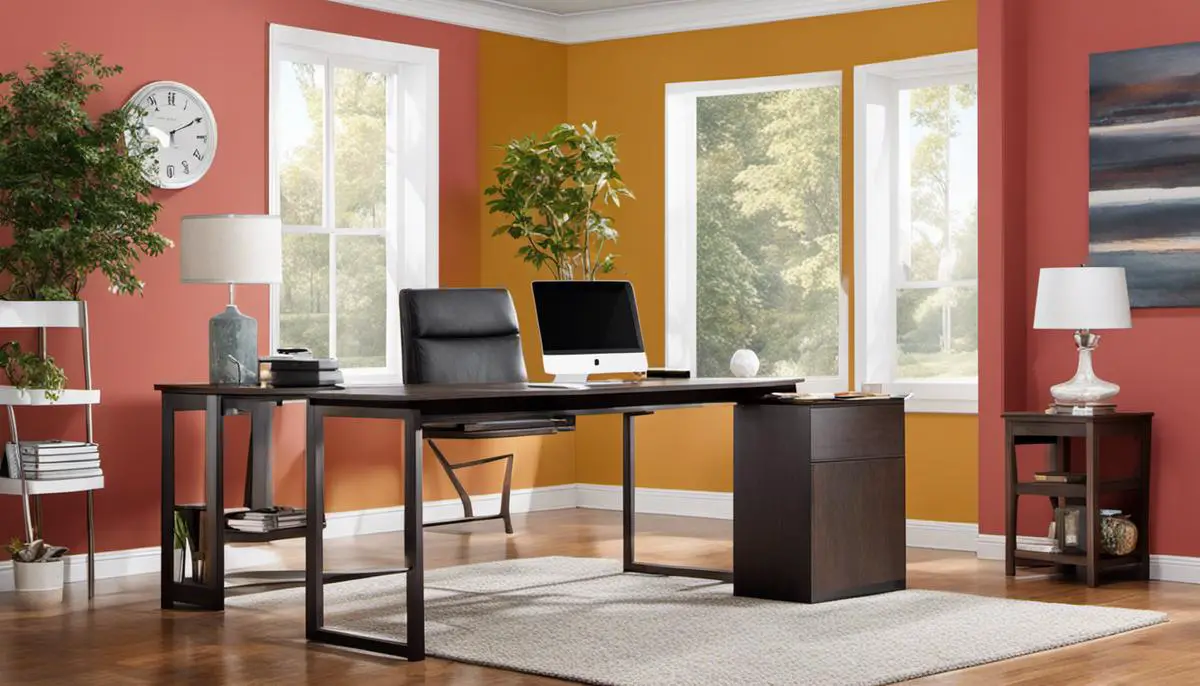


Leave a Reply